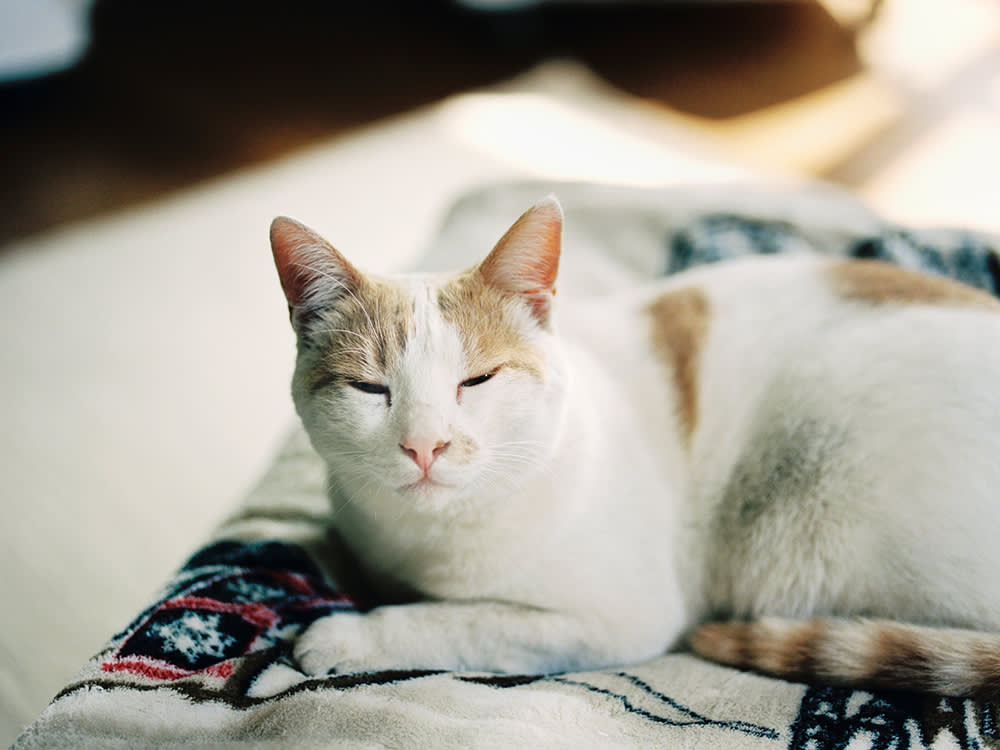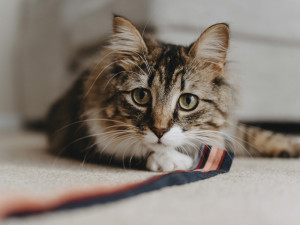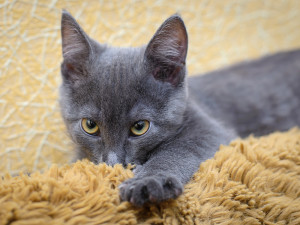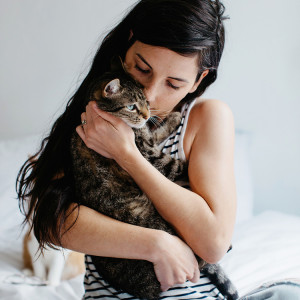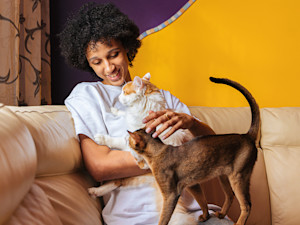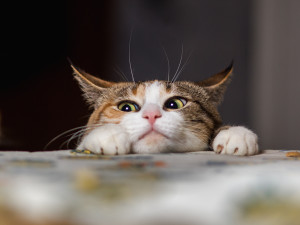Study Says ‘Slow Blinking’ At Your Cat Helps You Bond
A team of psychologists at the Universities of Sussex and Portsmouth discovered the key to building a bond with cats
If you’ve ever felt like you and your cat share a secret language, you may be right. A 2020 studyopens in new tab, The role of cat eye narrowing movements in cat-human communication, published in Scientific Reports, has shown that it is possible to build rapport with a cat by using an eye-narrowing technique with them. This eye narrowing action by humans generates something popularly known as a cat smile – the so-called ‘slow blinking’ (not to be mistaken for cat winking) – and seems to make the human more attractive to the cat. Eye narrowing movements in cats have some parallels with the genuine smile in humans (the Duchenne smile), as well as eye narrowing movements given in positive situations in some other species.
The team, led by Tasmin Humphrey and Karen McComb, animal behaviour scientists at the University of Sussex, undertook two experiments. The first revealed that cats are more likely to slow blink at their owners after their owners have slow blinked at them, compared to when they don’t interact at all. The second experiment, this time with a researcher from the psychology team, rather than the owner, found that the cats were more likely to approach the experimenter’s outstretched hand after they’d slow blinked at the cat, compared to when they had adopted a neutral expression. Taken together, the study shows that this slow blinking technique can provide a form of positive communication between cats and humans.
What the study found
Cats were more likely to slow blink at their owners if their owners had slow blinked at them, compared to when the owner was present in the room but not delivering a slow blink stimulus.
Cats were more likely to slow blink when an unfamiliar experimenter slow blinked at them, compared to when they had maintained a neutral expression.
Cats preferred to approach an experimenter after they had slow blinked at the cat more than if they had maintained a neutral expression.
McComb, who supervised the work, said: “As someone who has both studied animal behavior and is a cat owner, it’s great to be able to show that cats and humans can communicate in this way. It’s something that many cat owners had already suspected, so it’s exciting to have found evidence for it.
“This study is the first to experimentally investigate the role of slow blinking in cat-human communication. And it is something you can try yourself with your own cat at home, or with cats you meet in the street. It’s a great way of enhancing the bond you have with cats. Try narrowing your eyes at them as you would in a relaxed smile, followed by closing your eyes for a couple of seconds. You’ll find they respond in the same way themselves and you can start a sort of conversation.”
Humphrey, who was the first author of the study, said, “Understanding positive ways in which cats and humans interact can enhance public understanding of cats, improve feline welfare, and tell us more about the socio-cognitive abilities of this under-studied species. Our findings could potentially be used to assess the welfare of cats in a variety of settings, including veterinary practices and shelters. In terms of why cats behave in this way, it could be argued that cats developed the slow blink behaviours because humans perceived slow blinking as positive. Cats may have learned that humans reward them for responding to slow blinking. It is also possible that slow blinking in cats began as a way to interrupt an unbroken stare, which is potentially threatening in social interaction.”
Leanne Proops at University of Portsmouth, who co-supervised the work, added: “It’s definitely not easy to study natural cat behaviour so these results provide a rare insight into the world of cat-human communication.”
How the experiments worked
Two experiments were conducted to explore the significance of the slow blink in cat-human communication. The first experiment included a total of 21 cats from 14 different households. Fourteen different owners participated in the first experiment. Ten of the cats were male and 11 of the cats were female, and they ranged from half a year to 16 years old. The experiments took place in each cat’s home. The psychologist advised the cat’s owner on how to slow blink. Once the cat had settled down in one place, the psychologist asked the owner to sit approximately one metre away from the cat.
Experiment two included 24 cats. Twelve cats were male and 12 cats were female, with an age range of one to 17 years old. The cats included in the final analyses were from eight different households. In this experiment, the researcher, who was unfamiliar to the cat, either slow blinked at the cat or adopted a neutral face without direct eye contact. This experiment also tested in which context the cats preferred to approach the unfamiliar experimenter, by offering the cat a flat hand with palm faced upwards whilst sat or crouched directly opposite the cat. Both experiments were video recorded.
Cat psychology: the existing context
In the paper, the authors provide some context for their findings. The psychology of cats hasn’t been studied as extensively as dogs, but what is already known includes:
That cats have been shown to attract and manipulate human attention effectively through ‘solicitation purring’.
That cats can discriminate their name from other words, even when unfamiliar humans are calling.
That cats may be sensitive to human emotional cues, and will rub or butt their head against an owner who feels sad.
